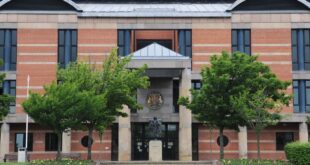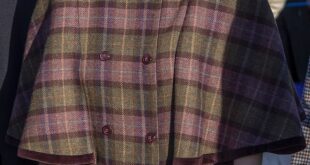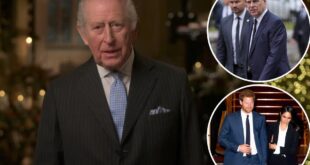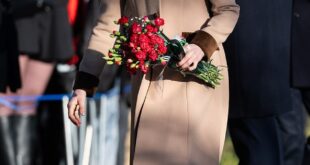Married to Britain’s Queen Elizabeth since 1947, Prince Philip was the son of Princess Alice of Battenberg and Prince Andrew of Greece and Denmark
Princess Eugenie and Jack Brooksbank’s first born child has been named after Prince Philip and both parents’ great-great-great-great-great grandfathers – Prince Albert and Reverend Edward Hawke Brooksbank.
So who are the men who inspired the name August Philip Hawke Brookesbank?
Prince Philip
Born: June 10, 1921 (age: 99)
Married to Britain’s Queen Elizabeth since 1947, Prince Philip was the son of Princess Alice of Battenberg and Prince Andrew of Greece and Denmark.
He was born into two royal families but was exiled from Greece while still an infant. He went to schools in France, Germany and the UK before joining the Royal Navy in 1939, aged 18.
Prince Philip, born Prince Philip of Greece and Denmark, met then-Princess Elizabeth in 1934 and the pair began corresponding in July 1939. After the war, Philip was granted permission by King George VI to marry her.
Before the engagement was announced in July 1947, the prince abandoned his Greek and Danish titles and became a British citizen. He adopted the surname of his maternal grandparents – Mountbatten.
He left active military service after Elizabeth became queen in 1952, after reaching the rank of commander, and was formally made a British prince in 1957.
Prince Philip and Elizabeth had four children: Charles, Prince of Wales; Anne, Princess Royal; Prince Andrew, Duke of York; and Prince Edward, Earl of Wessex.
He is now a patron, president, or member of more than 780 organisations and is styled the Duke of Edinburgh. He retired from royal duties on August 2, 2017, aged 96, after completing 22,219 solo engagements since 1952.
Prince Philip was known to regularly put his foot in his mouth by swearing during royal visits. In 2015, he told a photographer to ‘just take the f***ing picture’ during a photocall at the RAF Club.

Queen Victoria’s husband Albert, the prince consort, was born into the Saxon Duchy of Saxe-Coburg-Saalfeld to parents well connected with Europe’s ruling monarchs
Prince Albert (Franz Albert August Karl Emanuel)
Born: August, 26, 1819 Died: December 14, 1861
Queen Victoria’s husband Albert, the prince consort, was born into the Saxon Duchy of Saxe-Coburg-Saalfeld to parents well connected with Europe’s ruling monarchs.
Aged 20 he married his cousin, Victoria, and the couple had nine children together: Victoria; Albert ‘Bertie’; Alice; Alfred; Helena; Louise; Arthur; Leopold; and Beatrice.
During their courting stage, Victoria wrote: ‘[Albert] is extremely handsome; his hair is about the same colour as mine; his eyes are large and blue, and he has a beautiful nose and a very sweet mouth with fine teeth; but the charm of his countenance is his expression, which is most delightful.’ She proposed to him on October 15, 1839.
He quickly developed a reputation for supporting public causes including education reform and the abolition of slavery worldwide. Queen Victoria trusted him to deal with the household, office and estates.
The prince developed the constitutional monarchy by persuading his wife to be less partisan in her dealings with parliament and when he died aged 42 Queen Victoria went into mourning for the rest of her life.
Reverend Edward Hawke Brooksbank
Born: December 9, 1789 Died: August 5, 1883
Rev. Edward Brooksbank held the office of Justice of the Peace for the West Riding, Yorkshire, and lived at Healaugh Manor in Yorkshire.
The vicar of Tickhill first married a Hannah Heywood who gave birth to his three children but died in 1846, aged 58. The reverend then married Mary Parker on December 5, 1848.
He graduated from Cambridge University with a Master of Arts (MA) and died aged 93.
Prince Augustus Frederick

Prince Augustus Frederick (pictured) was the sixth son and ninth child of King George III
Born: January 27, 1773 Died: April 21, 1843
Prince Augustus Frederick was the sixth son and ninth child of King George III.
While travelling in Rome he met Lady Augusta Murray and the couple secretly married on April 4, 1793. They married a second time without revealing their full names at St George’s, Hanover Square, Westminster, on December 5, 1793.
Both marriages took place without the permission of his father. Because of this, in August 1794, the marriage was annulled on the grounds that it contravened the Royal Marriages Act 1772.
He continued to live with Lady Augusta until 1801, when he received a parliamentary grant of £12,000 and the couple separated. Lady Augusta was given custody of their children Augustus Frederick d’Este and Augusta Emma d’Este. She received maintenance of £4,000 a year.
A year after the death of Lady Augusta, the Duke of Sussex married a second time on May 2, 1831, again without gaining the permission of the sovereign, to Lady Cecilia Letitia Buggin.
She was never recognised as the Duchess of Sussex but became Duchess of Inverness by Queen Victoria in 1840.
Prince Augustus was the favourite uncle of Queen Victoria and gave her away at her wedding to Prince Albert.
Source link



